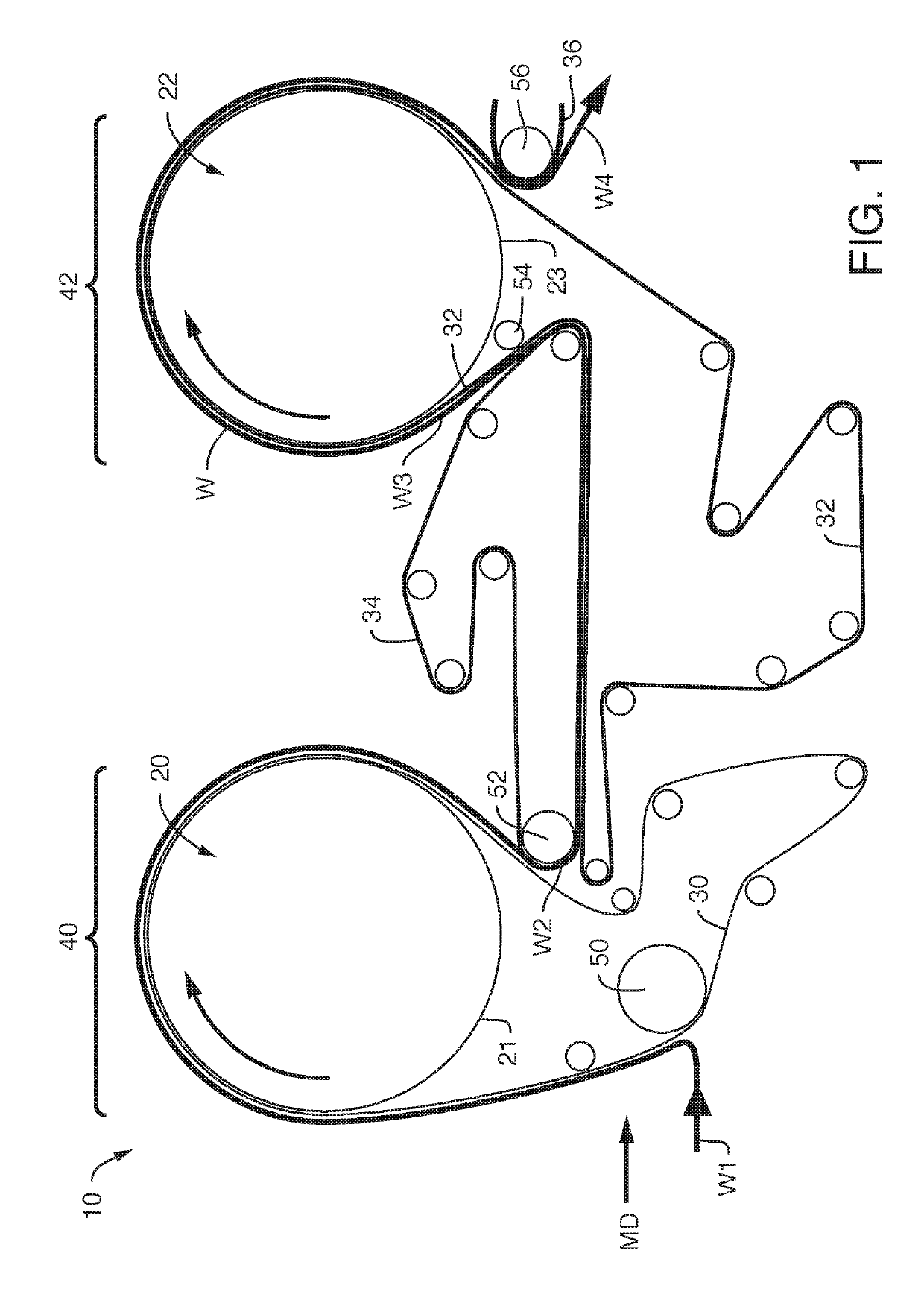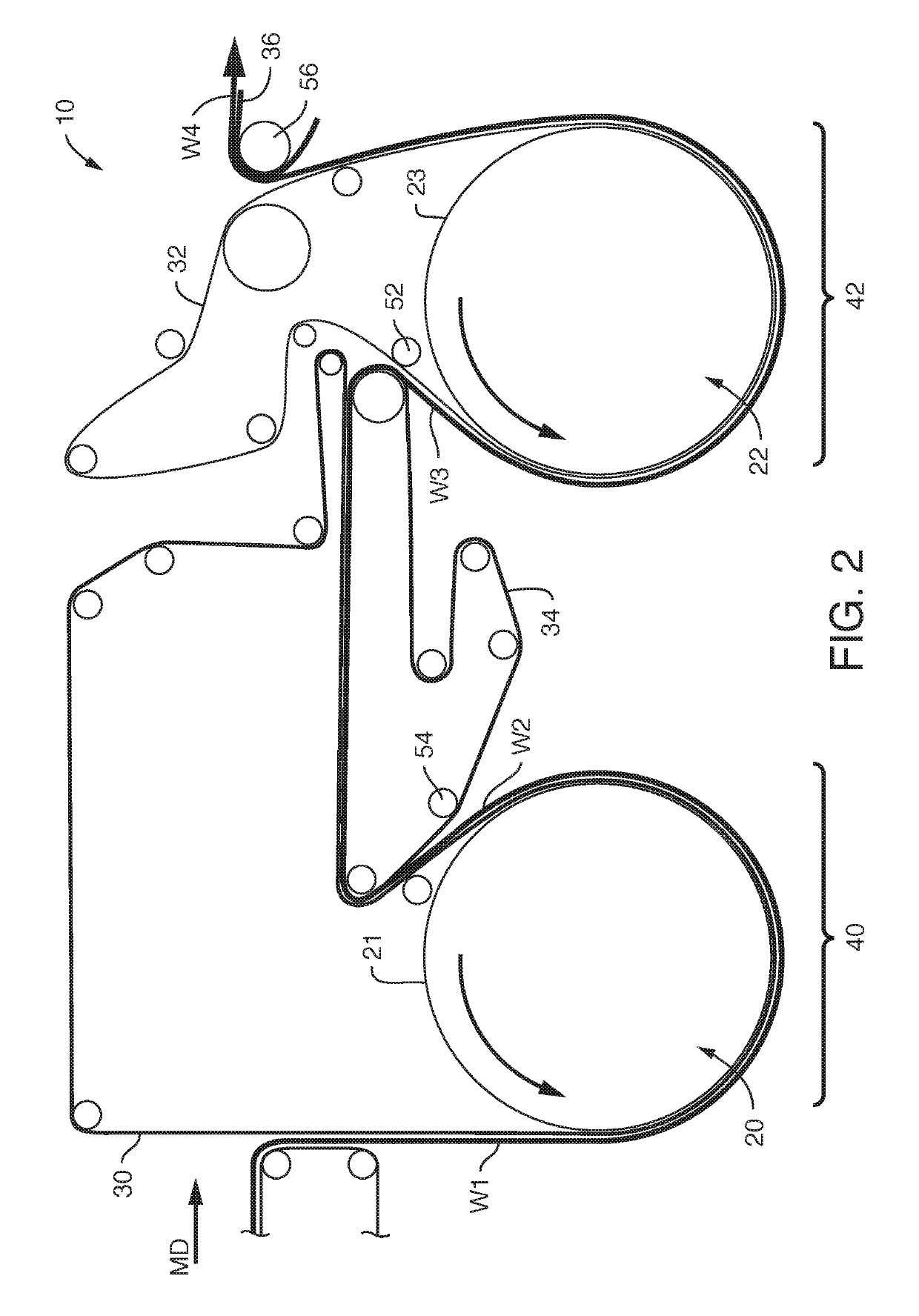Through-air drying apparatus and methods of manufacture
a technology of through-air drying and manufacturing methods, which is applied in the dryer section, papermaking, textiles and papermaking, etc., can solve the problems of non-uniform tissue webs, variable moisture content and/or physical properties of webs, and has not yet been successfully addressed. , to achieve the effect of optimizing both the dewatering performance and/or tissue product properties, optimizing molding, and improving overall drying performan
- Summary
- Abstract
- Description
- Claims
- Application Information
AI Technical Summary
Benefits of technology
Problems solved by technology
Method used
Image
Examples
examples
[0059]The benefits and advantages of utilizing two separate TAD fabrics was explored by manufacturing tissue products using a number of different fabrics. Inventive tissue products were manufactured using a TAD apparatus substantially as illustrated in FIG. 1. The properties of the first and the second TAD fabrics are described in TABLE 1, below. Control samples were manufactured using a conventional TAD apparatus where a single TAD fabric encircled the first and the second TADs. The single TAD fabric used to manufacture the controls was a woven fabric having a topographical pattern with a maximum z-directional elevation differences of 0.74 mm and an air permeability of 445 CFM.
[0060]
TABLE 1Maximum Z-directionalElevation Air TAD TopographicalDifferencesPermeabilityFabricPattern(mm)(CFM)ConstructionControlYes0.74445WovenMaxYes0.29500WovenJackYes0.74445Woven
[0061]Transfer of the tissue web from the first TAD fabric to the second TAD fabric was accomplished via an intermediate fabric. ...
PUM
 Login to View More
Login to View More Abstract
Description
Claims
Application Information
 Login to View More
Login to View More - R&D Engineer
- R&D Manager
- IP Professional
- Industry Leading Data Capabilities
- Powerful AI technology
- Patent DNA Extraction
Browse by: Latest US Patents, China's latest patents, Technical Efficacy Thesaurus, Application Domain, Technology Topic, Popular Technical Reports.
© 2024 PatSnap. All rights reserved.Legal|Privacy policy|Modern Slavery Act Transparency Statement|Sitemap|About US| Contact US: help@patsnap.com









